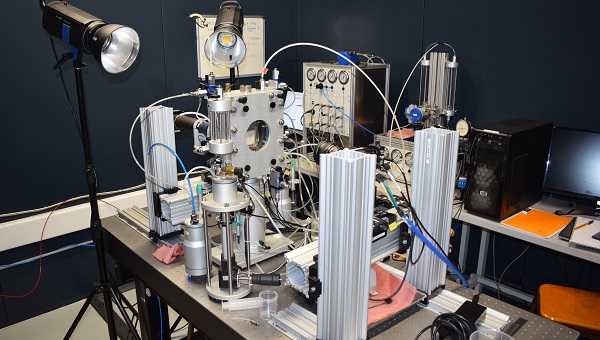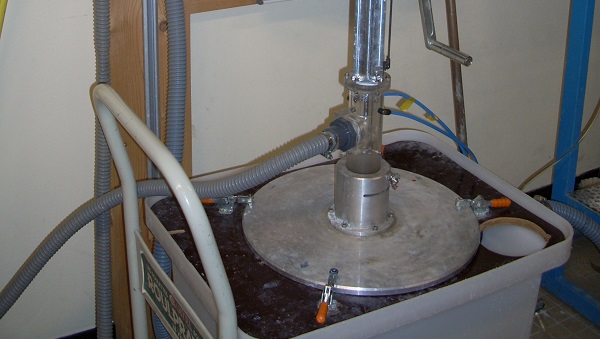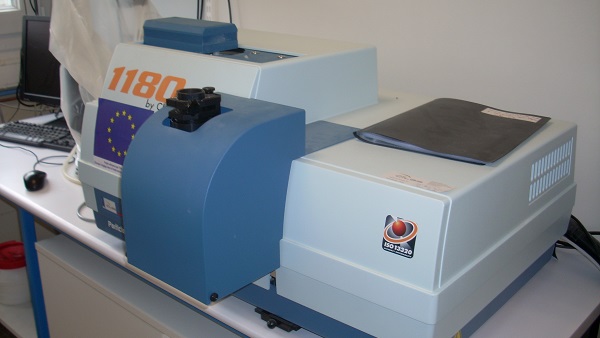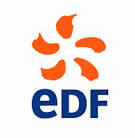This research focus aims to develop multi-scale analysis methods for characterizing the effects of microstructure evolution on the behavior of geomaterials subjected to complex stresses. These stresses include internal erosion phenomena, filtration, trimming, cyclic loading, drainage-imbibition cycles, thermal loading, and coupled thermo-hydro-poro-chemo-mechanical loading.
Particularly, the focus will be on coupled instabilities in geomaterials at both the microscopic scale, such as force chain instabilities in granular materials, and the mesoscopic scale of laboratory samples, such as diffuse instabilities leading to material collapse, localization instabilities of deformation or fluid phase flow (fingering); and finally, at the macroscopic in-situ scale, such as landslides, fault reactivation, soil liquefaction, coastal erosion, and river erosion of levees or embankment dams.
Within this research focus, the activities can be grouped into three sub-areas:

Hydro-mechanical
loading

Thermo-hydro-mechanical loading

Instabilities in graular materials
FACILITIES
Experimental methods and adapted optical techniques are developed for laboratory monitoring of the aforementioned processes. It is worth noting that some of these research subjects have no equivalent worldwide.
Mechanical modeling is developed by always positioning itself at the interface between macroscopic modeling of continuous media, enriched and/or micro-morphic, and homogenization modeling, in order to address any issues related to the multi-physics and multi-scale nature of the phenomena considered.
Numerical simulation is integrated with mechanical modeling through the development of suitable finite elements, but it will also be independent within the framework of developing discrete element methods (DEM), Smoothed Particle Hydrodynamics (SPH), and Machine Learning.
- Experimental Apparatus (biaxial machine, multi-phase interface machine, triaxial erodometers, etc.)
- Numerical Simulation Methods (FEM, DEM, SPH, LBM, FFT-based upscaling method)
ONGOING PROJECTS
- Project ANR PERSÉE – PERmeability evolution of granular Soils in an internal Erosion context (2022 – 2026)
- Project Carnot MERS – MERCC – Modeling coastal erosion in response to climate change (2022-2025).
- Experimental and numerical contribution to the study of risks in earthen hydraulic structures, funded by EDF-Centre d’Ingénierie Hydraulique, Verbund (2020-2024)
- …
MEMBERS
- Fateh BENDAHMANE (McF-HDR)
- Rachel GELET (McF-HDR)
- Pierre-Yves HICHER (PU)
- Panagiotis KOTRONIS (PU)
- Didier MAROT (PU)
- Ngoc-Son NGUYEN (McF)
- Siddhartha OMMI (McF)
- Giulio SCIARRA (PU)
PUBLICATIONS
Ali-hassan, N., Nguyen, N.S., Marot, D. and Bendahmane, F., 2022. Consequences of scalping and scalping/replacement procedures on strength properties of coarse-grained gap-graded soils. Canadian Geotechnical Journal. https://doi.org/10.1139/cgj-2021-0504
Taha, H., Nguyen, N.S., Marot, D., Hijazi, A. and Abou-Saleh, K., 2022. A DEM study of the effect of the loss of fine particles on the mechanical behavior of gap-graded soils. Geomechanics for Energy and the Environment, p.100305.
Nguyen, N.S., Taha, H. and Marot, D., 2021. A new Delaunay triangulation-based approach to characterize the pore network in granular materials. Acta Geotechnica, 16(7), pp.2111-2129.
Taha, H., Nguyen, N.S., Marot, D., Hijazi, A. and Abou-Saleh, K., 2019. Micro-scale investigation of the role of finer grains in the behavior of bidisperse granular materials. Granular Matter, 21(2), pp.1-17.












